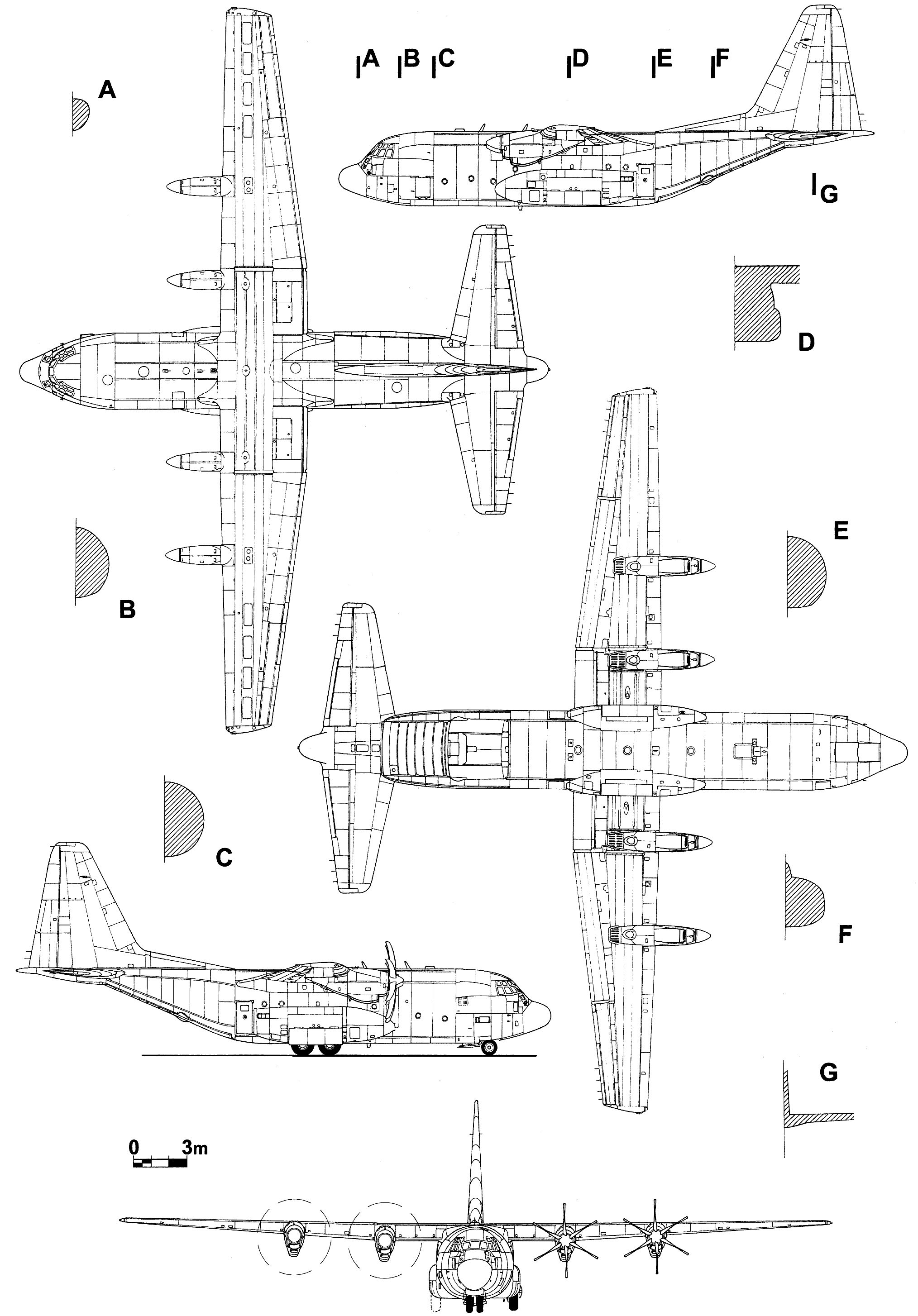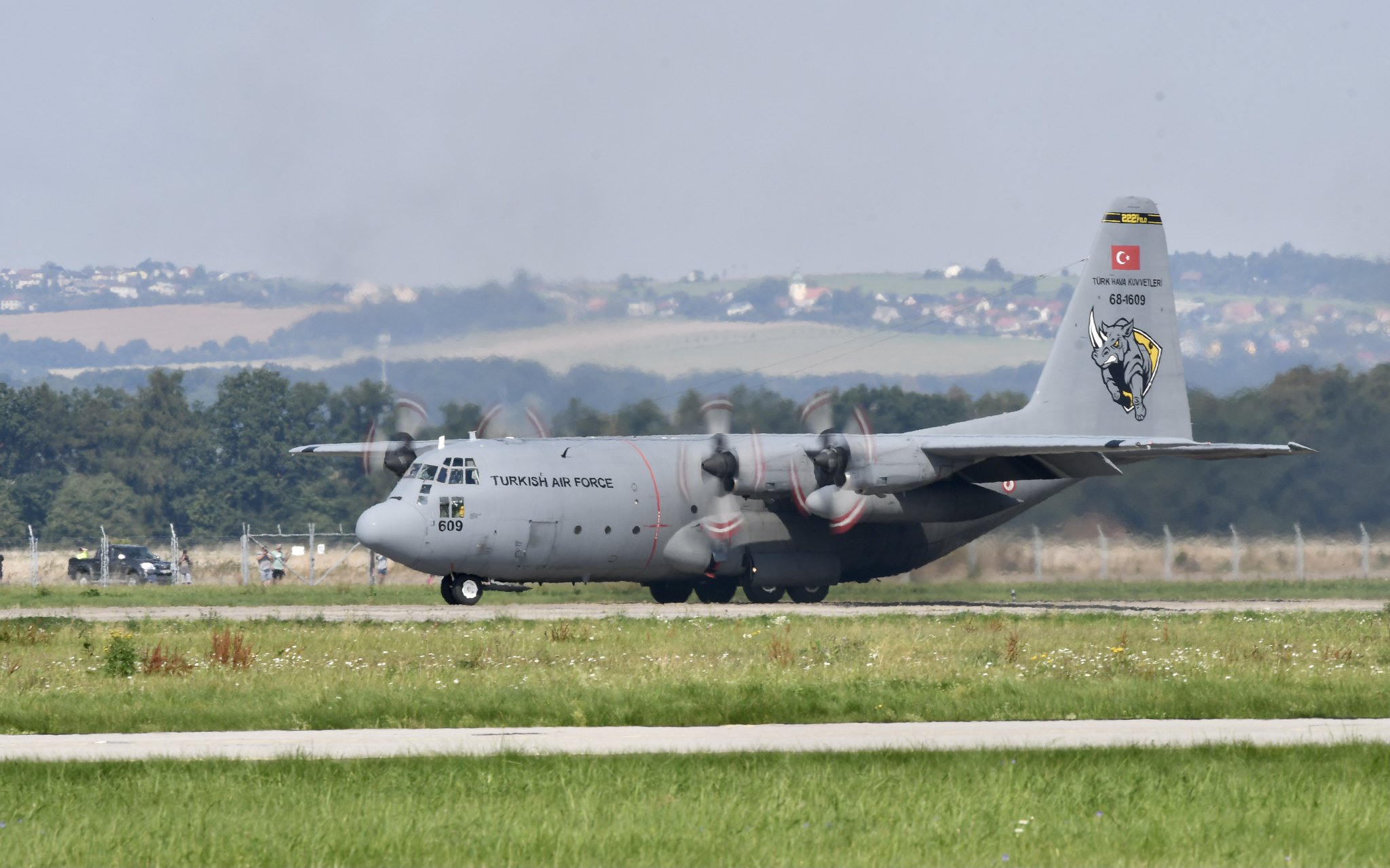The C-130 Hercules, developed by Lockheed Corporation, is a medium-range tactical transport aircraft powered by four turboprop engines. With its ability to take off and land from unprepared or short runways, it can operate in various climatic and terrain conditions.
Development and Production Process
The initial design requirement was submitted by the US Air Force in 1951. The first flight took place in August 1954, and series production began in 1956. Over time, numerous variants were developed, including extended-fuselage versions and models equipped with modern technical systems.
From its inception, the C-130 family has served as a multi-purpose platform in both combat and peacetime operations. During the Cold War, it formed the backbone of tactical airlift and airborne assault missions, and in subsequent conflicts and crises (such as Vietnam, Gulf operations, Iraq, and Afghanistan operations), it has undertaken material, personnel, and medical evacuation tasks. In addition, armed variants such as the AC-130 provided close air support, while KC-130 variants were used for aerial refueling missions.
C-130s have frequently been deployed as the first transport vehicle in major disaster and humanitarian aid operations (such as tsunami and earthquake relief efforts), enabling the delivery of supplies to areas with damaged infrastructure thanks to their ability to land and take off from short and unprepared runways.
Technical Specifications
The C-130 Hercules is a medium-range tactical transport aircraft powered by four turboprop engines. The C-130B model is approximately 29.8 meters long, with a wingspan of 40.4 meters and a height of 11.6 meters. Its maximum takeoff weight is 70,300 kg, and its range is 3,800 kilometers. It has a capacity to carry 92 passengers, 64 paratroopers, or up to 20,000 kg of cargo.
The C-130E model differs from the C-130B in terms of range and cargo capacity due to its design being compatible with external fuel tanks.
The C-130J model is equipped with digital cockpit systems, composite propellers, and advanced avionics, with a maximum takeoff weight of 74,000 kg and a range of approximately 4,000 kilometers. The wide-body C-130J-30 variant can carry 128 passengers or 8 pallets.
Variants
- C-130A/B/E/H: These are early-generation models. The C-130B is the basic model and cannot carry external fuel tanks, while the C-130E was developed to be compatible with external fuel tanks for longer range and greater transport capacity. The C-130H has more powerful engines.
- C-130H-30: An extended-fuselage variant of the H model. It offers increased cargo volume and carrying capacity.
- C-130J “Super Hercules”: Features Rolls-Royce AE2100D3 engines and six-bladed composite propellers. It has been modernized with a digital cockpit, advanced navigation systems, and reduced crew requirements. The C-130J-30 variant is an extended fuselage version.
- AC-130: An armed model converted from the C-130 platform. It is equipped with side-firing systems and provides close air support during night missions.
- KC-130: Designed for refueling missions. It can transfer fuel both from the air and from the ground. The KC-130J variant, built on the C-130J platform, is also available.
- EC/MC/HC-130: Models produced for special missions based on the C-130J.
- MC-130J: Used for special operations and refueling missions.
- HC-130J: Designed for search and rescue and maritime support missions.
- EC-130: Adapted for electronic warfare and communications jamming missions.

C-130 sketch (Drawing Database)
Mission Capabilities
The C-130 is used in military logistics missions, personnel and vehicle transport, parachute cargo and troop drops, medical evacuation, and humanitarian aid operations. The rear cargo ramp facilitates the easy loading of large vehicles and equipment. Its spacious modular design allows it to be adapted to special mission configurations such as reconnaissance, firefighting, maritime patrol, and electronic warfare.
International Use
The C-130 Hercules has served in the air forces of more than 60 countries since it entered production in the mid-1950s. This wide geographical distribution is due to the aircraft's reliable performance in different climatic conditions and varying operational requirements.
The largest users outside the US include the UK, Australia, Canada, France, India, Japan, South Korea, Brazil, Egypt, Saudi Arabia, Indonesia, and Türkiye. These countries have used the C-130 for both military and civilian missions, creating a versatile operational backbone for their fleets.
The C-130 family has participated in numerous missions under NATO, the United Nations, and various international coalitions from the Cold War era to the present day. The aircraft have served in numerous conflict zones, including the Vietnam War, the Gulf Wars, operations in Afghanistan and Iraq, and interventions in Somalia, Kosovo, and Libya. In these missions, they have transported both supplies and personnel, while also providing close air support to ground forces with AC-130 variants.
The Hercules fleet has also become a symbol of humanitarian aid operations. In major disasters such as the 2004 Indian Ocean tsunami, the 2010 Haiti earthquake, and the 2023 Türkiye-Syria earthquakes, C-130s were among the first aircraft to deliver essential relief supplies to the affected areas. Due to its ability to take off and land on short runways and rough terrain, it has remained operational even in areas with collapsed infrastructure.
Many countries have carried out modernization and localization programs on the C-130 using their own industrial infrastructure. Marshall Aerospace in the UK, Airbus Defence Australia in Australia, and Korea Aerospace Industries in South Korea are the main executors of such projects. Due to these programs, the C-130J variant has been adapted to modern mission requirements with digital flight systems, composite materials, and reduced maintenance load.
NATO and partner countries also use the C-130 fleet as a standardization tool for tactical airlift missions. This has facilitated the sharing of spare parts, training, and maintenance infrastructure among alliance members during joint operations.
Use in Türkiye
The Turkish Air Force received its first C-130 aircraft in 1964. The C-130E model was initially put into service, with the C-130B model being added to the inventory in subsequent years.
During the Cyprus Peace Operation, C-130s were effectively used in airborne assault and logistical support missions. Starting in the 1990s, the aircraft began to be modernized under the “Erciyes Modernization Project,” which aimed to upgrade avionics systems, integrate digital displays, and ensure night vision compatibility.
The Turkish Air Force is also preparing an agreement to purchase C-130J-30 aircraft retired from the Royal Air Force. Türkiye aims to rejuvenate its existing C-130 fleet and increase its range and payload capacity.
Some C-130B aircraft have been adapted for firefighting duties, with firefighting tanks integrated for use in forest fire response operations.
On November 11, 2025, a Turkish Armed Forces C-130 cargo plane crashed in Georgian airspace while returning from Azerbaijan to Türkiye; the incident was announced to the public by the Ministry of National Defense on the same day.

Turkish Air Force C-130 (Flickr)
Modernization and the Future
Following the Erciyes Modernization, the Turkish Air Force's C-130 fleet has gained advanced communications, GPS-based navigation, and digital mission planning capabilities. With the procurement of the new generation C-130Js, this platform is expected to remain in service in the Turkish inventory until the 2040s.


